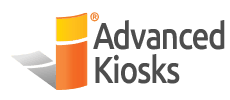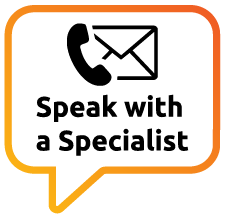Touch Screen Kiosks
Interactive Large Screen Kiosks for Engaging Experiences
Transform the way your organization delivers information with large touch screen kiosks from Advanced Kiosks. Built for high-traffic environments, our large screen kiosks combine cutting-edge touchscreen technology with modern design, making them ideal for digital signage, self-service solutions, and interactive displays.
Whether you need an interactive directory, wayfinding station, or self-service kiosk, our large display kiosk machines offer a powerful solution for businesses and institutions seeking to simplify operations and captivate their audience.
Explore Our Large Screen Kiosk Models
AIRPORT TOWER MACHINE
The Airport Tower Kiosk is a 7-foot-tall stainless steel kiosk with LED accents, designed to make a statement in high-traffic areas with its futuristic design.
INDOOR MONOLITH
The Indoor Monolith Kiosk, with its impressive 55″ touchscreen, captures attention while enhancing brand visibility through wayfinding, online catalogs, and product ordering features.
MERCHANT MAX
The Merchant Max Interactive Kiosk, featuring a striking LED lightbar, is designed for high-traffic point-of-sale settings to maximize customer satisfaction in food service, retail, and theaters.
OUTDOOR MONOLITH
The Outdoor Monolith Kiosk, available in 46″ and 55″ displays, is a weatherproof interactive display that attracts attention and enhances brand visibility in outdoor spaces.
PINNACLE SERVICE
The Pinnacle Service Kiosk, with its impressive 43” or 55″ horizontal touchscreen, enhances lobbies and exhibits by providing interactive visitor information.
WALL MOUNTED TOUCH SCREEN KIOSK
The Wall-Mounted Touchscreen Kiosk offers a sleek, space-saving design suitable for both simple self-service applications and immersive customer experiences.
- Dynamic Displays: High-resolution large screens ideal for videos, maps, and promotional content
- Versatile Applications: Perfect for visitor check-ins, ticketing, and public announcements
- Built for Heavy Use: Each large kiosk is crafted from commercial-grade materials for indoor and semi-outdoor use
- Customizable Options: Tailor your large touch screen kiosk with custom branding, software, and color options.

Marine Heritage Foundation Lobby with a Large Touch Screen Kiosk
Key Benefits of a Large Display Kiosk
Investing in a large display kiosk goes beyond just upgrading your equipment—it’s about enhancing user experience and operational efficiency.
- Enhanced User Engagement: Large touch screens promote interaction and boost customer satisfaction.
- Increased Efficiency: Self-service kiosks reduce staffing needs and wait times.
- Modern Design: Large kiosks create a professional, sleek presentation for your space.
- Future-Proof Technology: Designed with multi-touch support and scalable software options.
Diverse Applications of Large Touch Screen Kiosks
Our large touch screen kiosks are engineered for versatility and can be utilized across a wide range of industries:
- Government: Use large kiosks for self-service license renewals, public directories, and informational hubs.
- Education: Enhance campus navigation with interactive wayfinding displays.
- Healthcare: Streamline patient check-ins with a large screen kiosk for faster service.
- Retail & Business: Engage customers with digital signage and promotional displays.
- Events & Hospitality: Use a large touch screen kiosk for event directories and guest services.
Why Choose Advanced Kiosks for Your Large Display Kiosk Needs?
As a leading kiosk manufacturer, we deliver large display kiosks that combine premium hardware with powerful software, ensuring long-term reliability and maximum return on investment.
- Screen Sizes: Available in 32”, 43”, and 55” options for various applications.
Touch Technology: Multi-touch capacitive displays for a smooth, responsive experience. - Warranty: 3-year comprehensive coverage included with every large kiosk.
- Durability: Built with commercial-grade steel for lasting performance.
- U.S.-Based Support: Expert assistance and ongoing technical support included.
Large Screen Directory Kiosk in County Office Building
Advanced Kiosks: Your Partner for Innovative Touchscreen Kiosk Solutions

Frequently Asked Questions (FAQ)
What is a Large Touch Screen Kiosk?
A large touch screen kiosk is an interactive self-service station equipped with a high-resolution touch display and customizable software. It allows users to access information, complete tasks, and interact with content without staff assistance. These kiosks are commonly used for digital signage, self-service check-ins, and wayfinding solutions.
What Are the Key Benefits of a Large Display Kiosk?
Investing in a large display kiosk offers numerous benefits, including:
- Enhanced User Engagement: Interactive screens encourage participation and improve the user experience.
- Increased Operational Efficiency: Automate tasks such as check-ins and information access, reducing staff workload.
- Modern Aesthetic: Sleek, professional designs enhance any space.
- Durability: Built with commercial-grade materials for long-term performance.
- Customizability: Tailor your kiosk with branding, software, and hardware upgrades.
What Industries Use Large Touch Screen Kiosks?
Large touch screen kiosks serve a wide range of industries, including:
- Government: For license renewals, public directories, and information hubs.
- Healthcare: Patient check-ins and wayfinding assistance.
- Education: Campus maps, event information, and student resources.
- Retail: Digital signage, promotional content, and product catalogs.
- Hospitality & Events: Interactive event directories and self-service check-ins.
What Screen Sizes Are Available for Large Kiosks?
Our large screen kiosks are available in various screen sizes to suit different environments and applications:
- 32-inch Screen: Ideal for compact spaces and information hubs.
- 43-inch Screen: Perfect for wayfinding and interactive directories.
- 55-inch Screen: Best for large-scale digital signage and self-service kiosks.
Can a Large Touch Screen Kiosk Be Customized?
Yes! Advanced Kiosks offers customizable large screen kiosks to meet your unique needs:
- Custom Branding: Incorporate your logo and brand colors.
- Software Integration: Pre-installed software for ticketing, payment processing, and wayfinding.
- Hardware Add-Ons: Camera, barcode scanners, and receipt printers for expanded functionality.
Are Large Touch Screen Kiosks Durable?
Absolutely. Our large display kiosks are built with commercial-grade steel and tamper-resistant enclosures, ensuring durability for high-traffic environments like airports, malls, and public service centers.
How Do Large Touch Screen Kiosks Improve Customer Experience?
Large screen kiosks create a more engaging experience by:
- Reducing wait times with self-service check-ins.
- Providing interactive content like videos and promotions.
- Offering clear and user-friendly navigation with high-resolution displays
Get Expert Guidance for Your Perfect Kiosk Solution!
















